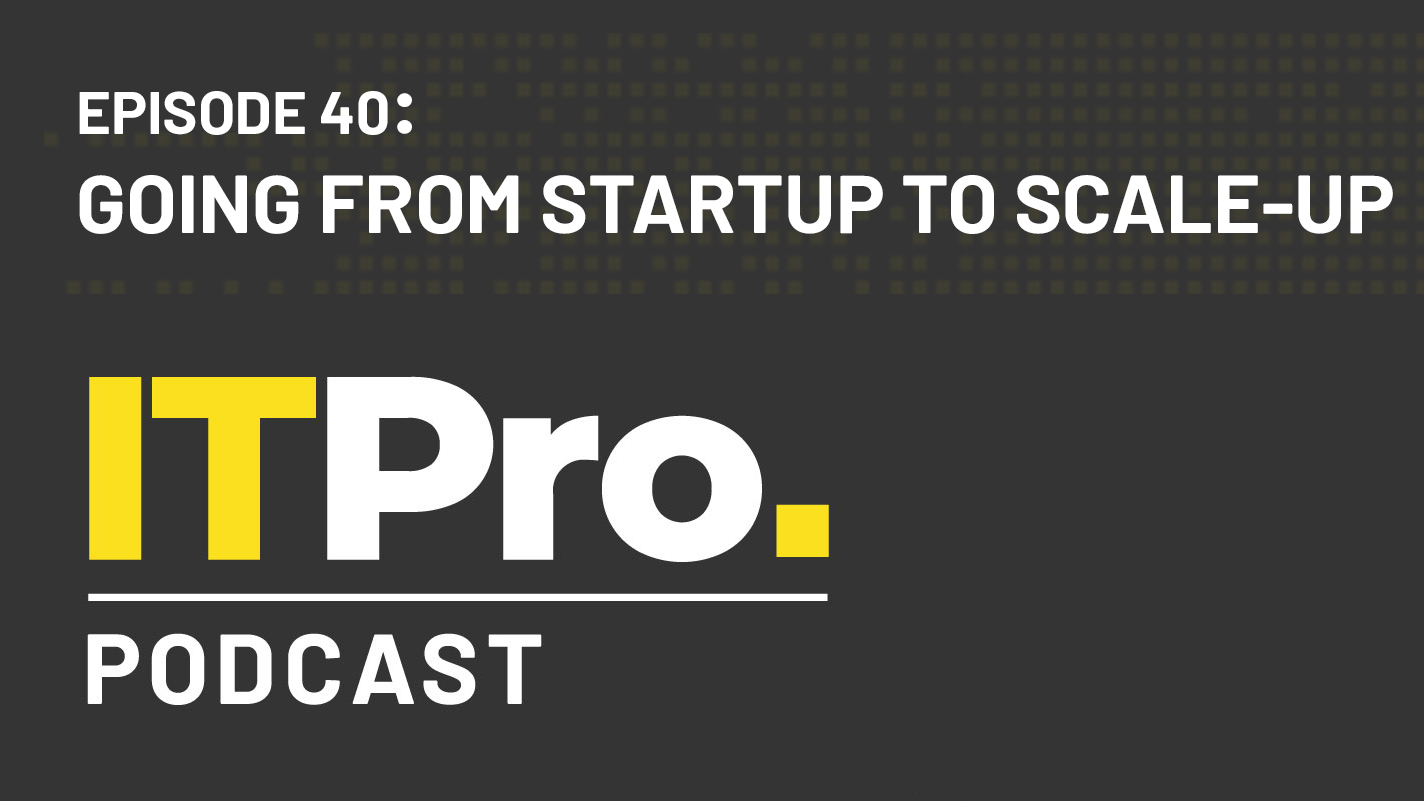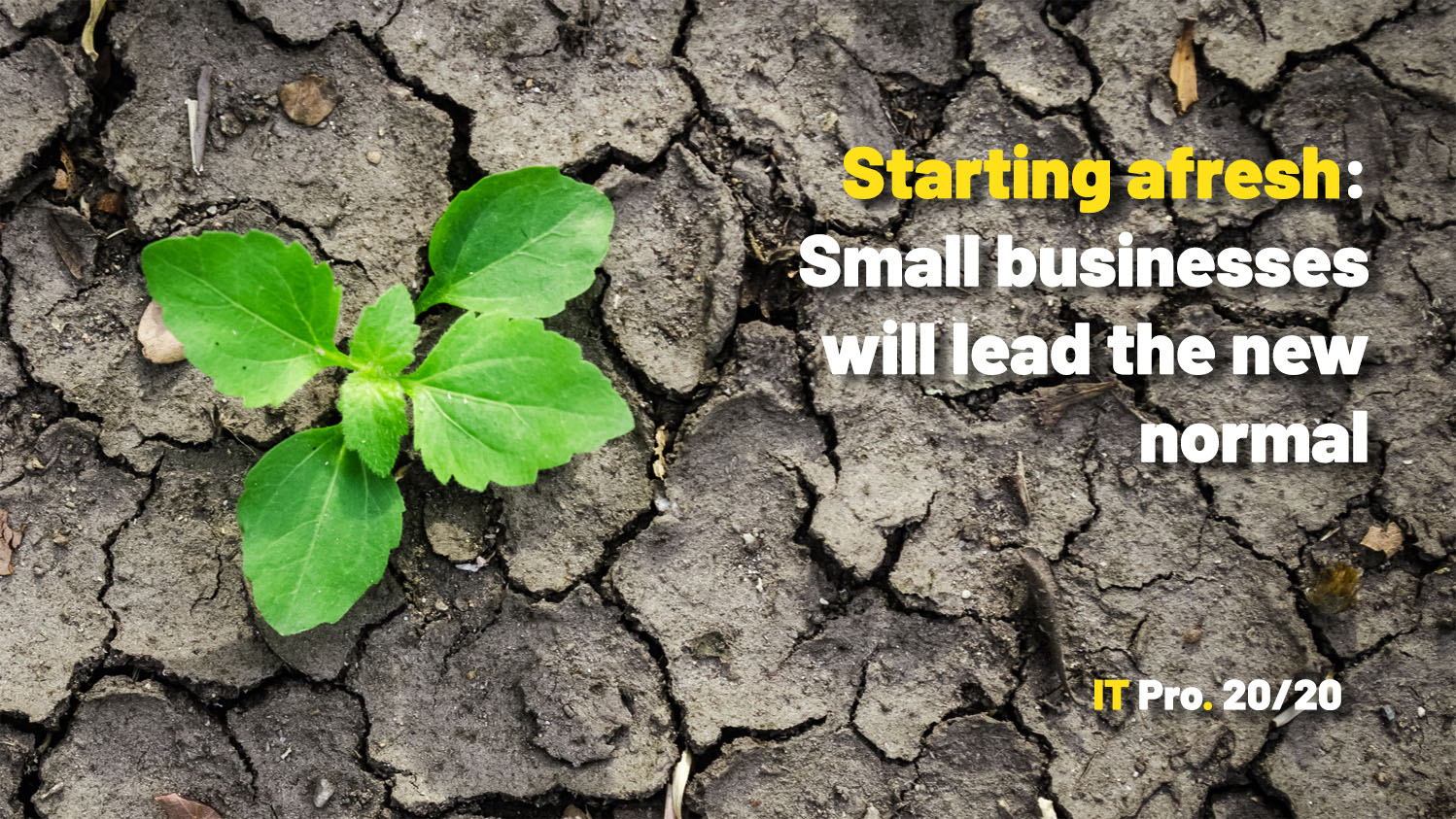Building the best tech stack for your SMB
Businesses have been encouraged to ‘go digital’ and transform their enterprises, but what tech should you choose to gain the most advantage?


This article originally appeared in July's edition of IT Pro 20/20, available here. To sign up to receive each new issue in your inbox, click here.
For your small business, choosing the right group of technologies – your ‘tech stack’ – is vital for long-term profitability. Digital transformation continues apace but SMBs, in particular, need to ensure they understand what their optimum tech stack looks like. This enables them to develop their businesses in a post-coronavirus trading landscape.
Developing and then implementing a tech stack for your small business is, of course, now taking place through the lens of COVID-19. The pandemic has massively disrupted business, but as enterprises get back to work in a very different operating environment, having the right technologies in place is critical.
Corinne Baxter, director of public sector consulting innovation and operations at Accenture UKI, said in a recent CBI blog post: “For businesses to thrive we need to be making investments that place innovation at the heart of a culture designed to compete in a global digital economy. Investment is needed in creative, design and technical skills through schools’ programmes and apprenticeships at all levels of the education system.”
Finding the right co-founder for your tech startup In the end, email might actually kill off Slack The IT Pro Podcast: Going from startup to scale-up
All businesses are different and have varying needs, but it's possible to define what should be driving the tech stack your organisation needs. For example, Capterra recently polled more than 400 SMBs to discover how COVID-19 had impacted their software buying decisions.
Remote desktop applications were cited by nearly two thirds (58.4%) of respondents as an investment that had been made as a direct result of the pandemic. More than a quarter (27%), meanwhile, have seen at least 50% of their planned software spending affected, with 35% accelerating their purchasing by six months.
Research from cloud communications platform Twilio reinforces these findings, with 96% of UK enterprise decision-makers believing the pandemic sped up their company's digital transformation.
Get the ITPro daily newsletter
Sign up today and you will receive a free copy of our Future Focus 2025 report - the leading guidance on AI, cybersecurity and other IT challenges as per 700+ senior executives
Almost four in five (77%) UK respondents said that COVID-19 increased their budget for digital transformation, of which 36% – more than any other country surveyed – said that it increased 'dramatically'.
More than Zoom
One of the critical aspects of your future tech stack will be how the consumer-level technologies your remote staff are using will be factored into a longer-term development strategy. The news headlines may have been filled with stories of the massive expansion in video conferencing, but a robust and secure tech stack has many components.
According to Jon Wrennall, CTO at British software and services provider Advanced, it’s important to avoid looking at things in isolation.
“Digital transformation will be thought of holistically and broken down into priority areas. It will come down to what has the biggest positive impact on a business' top and bottom line. Businesses will set their priorities before identifying the right technology that will enable their transformation – rather than finding great technology and then trying to build a case to put it in,” he tells IT Pro.
Small businesses must now innovate on parallel fronts: Their own operational tech stacks have in many cases been shattered as remote mass working has become the norm. Consumers have also had to radically alter how they buy goods and services, with much of this activity moving online and, increasingly, to mobile devices. The new tech stacks SMBs need to build now must consider these aspects.
The tools that make up your business' tech stack will also have to be dynamic and agile. While agility may have already been a significant component of your business' digital transformation, it’s now paramount and in the current environment the most agile company wins. From operational tech stacks to customer-facing tech stacks, they must all be able to pivot as employee and customer needs evolve and change.
RELATED RESOURCE

The IT Pro Podcast: Going from startup to scale-up
How companies can overcome ‘second album syndrome’ as they grow
Speaking to IT Pro, Nick McQuire, vice president of enterprise research at CCS Insight, explains: "I think there will be two changes: The first is obvious, that more SMBs will have fully embraced the cloud, from SaaS tools in workplace productivity and collaboration, CRM and infrastructure to support e-commerce, customer contact and application development.
“The second change is in security, where SMBs have been woefully underinvested in the past. Although spending will be tight, we will see more outsourcing to managed security suppliers to help SMBs address the security complexities stemming from remote work."
New normal tech
Your strategic planning should tell you which technologies need to be in your business' tech stack. Look at the core goals you have defined for your business; now factor in how the pandemic has impacted these goals. The results of this analysis will give you a clear plan of action when choosing services and vendors for your tech stack.
The experience of the lockdown in the first half of the year highlighted weaknesses in many organisations’ IT strategy and the need to fully embrace digital transformation, according to Bob Bailkoski, CEO of Logicalis.
RELATED RESOURCE

IT Pro 20/20: Small businesses will lead the new normal
The seventh issue of IT Pro 20/20 looks at the pivotal role small businesses will play in a post-coronavirus world
“In a post COVID world, businesses will define digital transformation as a necessity rather than a luxury,” he tells IT Pro. “I think we will see a real acceleration in digital transformations. This is driven by the fact that many organisations have not coped with the lockdown as well as they had hoped, so this produces an additional impetus to digital transformation. Businesses understand the value of a digital transformation and how this can benefit the organisation both in the short term and in preparation for any future crises that may emerge.”
Balancing the needs of a dispersed workforce, new commercial landscapes, consumers switching to mobile communications channels, and a working future that will look radically different than today; taking the time to re-evaluate your business' technology needs is time well spent. Too often, IT projects are derailed by a lack of planning and stated strategic goals. In a post-COVID-19 world, it's even more critical that these technology projects bear fruit.
There are masses of technology available to all SMBs. Your business' marketing, customer service, and employee collaboration tech stacks need to evolve to meet the challenges of the new normal. Nimble SMBs have an excellent opportunity to use their agility to develop compact, dynamic and secure tech stacks to make them leaders in their sectors.
David Howell is a freelance writer, journalist, broadcaster and content creator helping enterprises communicate.
Focussing on business and technology, he has a particular interest in how enterprises are using technology to connect with their customers using AI, VR and mobile innovation.
His work over the past 30 years has appeared in the national press and a diverse range of business and technology publications. You can follow David on LinkedIn.
-
 Bigger salaries, more burnout: Is the CISO role in crisis?
Bigger salaries, more burnout: Is the CISO role in crisis?In-depth CISOs are more stressed than ever before – but why is this and what can be done?
By Kate O'Flaherty Published
-
 Cheap cyber crime kits can be bought on the dark web for less than $25
Cheap cyber crime kits can be bought on the dark web for less than $25News Research from NordVPN shows phishing kits are now widely available on the dark web and via messaging apps like Telegram, and are often selling for less than $25.
By Emma Woollacott Published